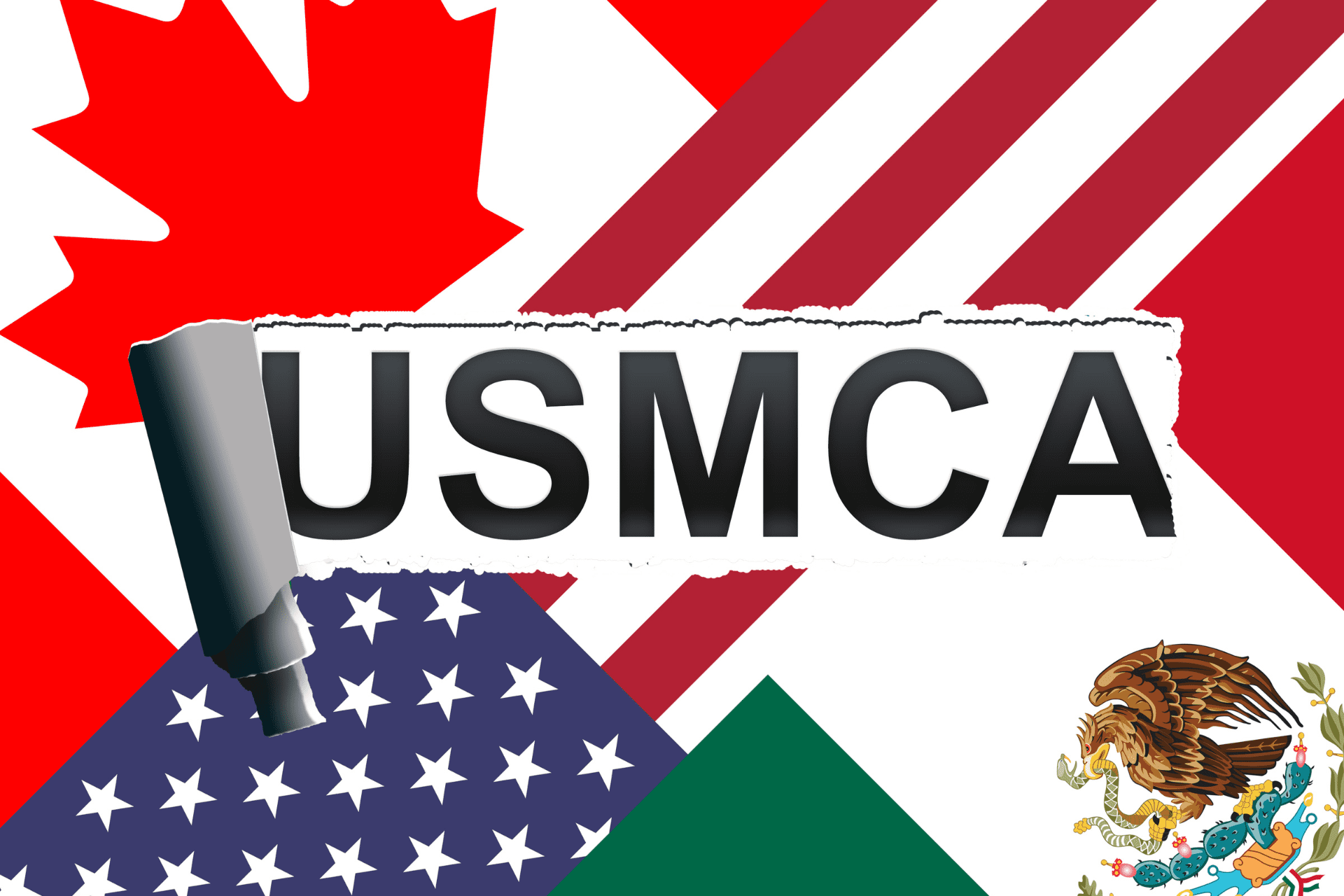By María José Gamba
The Evolution of a North American Alliance
Trade across North America has always been a story of evolution. From the NAFTA era in 1994 to the modern USMCA (T-MEC in Spanish) that came into force in 2020, the region has seen shifts in manufacturing, technology, and global competitiveness.
Now, as 2026 approaches, all eyes are turning toward what experts are calling “USMCA 2.0” — the potential revision of the trilateral agreement that governs more than $1.5 trillion in trade between the U.S., Mexico, and Canada (source).
Why 2026 Matters: The Six-Year Review Clause
One of the most important features of the current USMCA is the six-year review mechanism, known as the “sunset clause.”
This means that by July 2026, the three countries must decide whether to extend, amend, or renegotiate the deal.
In the U.S., political shifts will play a decisive role — particularly the outcome of the 2024 presidential elections. With new leadership could come new trade priorities: tighter labor rules, environmental standards, or renewed focus on semiconductor production and nearshoring to Mexico.
Mexico’s Strategic Position: From Manufacturing Hub to Trade Powerhouse
Mexico has become the top trading partner of the United States in 2024, surpassing China for the first time in decades (Bloomberg).
This shift highlights how nearshoring and regional integration are reshaping supply chains across the continent.
The potential USMCA 2.0 could focus on:
Expanding incentives for automotive and EV manufacturing.
Strengthening data protection and digital trade regulations.
Introducing greener logistics requirements to meet U.S. sustainability standards.
For Mexico, this means greater opportunities to attract investment — but also the responsibility to improve infrastructure, streamline customs operations, and modernize its logistics sector.
The U.S. Perspective: Competitiveness and Supply Chain Resilience
From Washington’s viewpoint, the future of USMCA 2.0 ties closely to strategic competition with China.
The U.S. aims to reduce dependence on Asian manufacturing by reinforcing North American production ecosystems.
According to the Wilson Center and Brookings Institution, an updated USMCA could emphasize:
Regional energy integration, including renewable energy corridors.
Standardized customs automation across borders.
Enhanced cooperation for critical minerals and semiconductor supply chains.
All of this positions Americas Forwarding and other regional logistics players as key enablers of efficiency and compliance under this new trade landscape.
Technology, Logistics, and the Future of Cross-Border Trade
One of the major shifts expected under USMCA 2.0 is the acceleration of digital logistics.
With the rise of AI, blockchain tracking, and real-time customs data exchange, logistics companies will need to:
Automate documentation through e-invoicing and e-manifests.
Adopt AI-powered predictive routing.
Strengthen cybersecurity protocols in cross-border data flows.
These changes won’t just streamline operations — they’ll redefine competitiveness in the North American supply chain.
Why It Matters for the Logistics Industry
The upcoming renegotiation of the USMCA is more than a political milestone — it’s a wake-up call for logistics and trade companies across North America.
The businesses that thrive will be those that:
Understand trade compliance on both sides of the border.
Use technology to enhance transparency and traceability.
Build sustainability and flexibility into their operations.
At Americas Forwarding, we understand that trade is evolving faster than ever.
Our commitment is to support our clients in navigating the next chapter of North American trade integration, ensuring resilience, efficiency, and innovation at every step of the supply chain.

